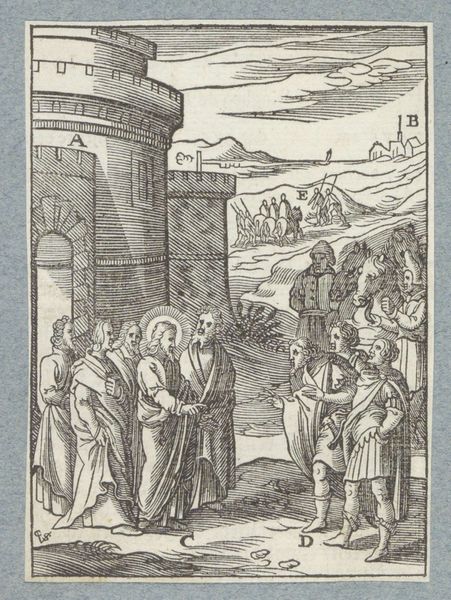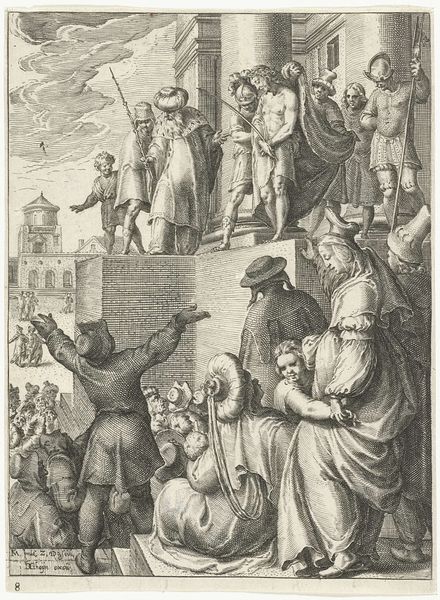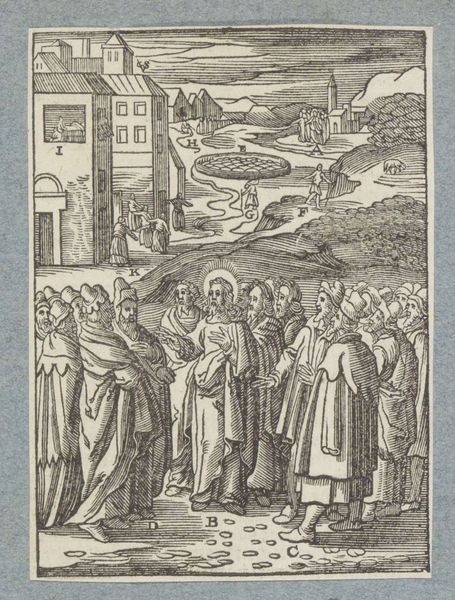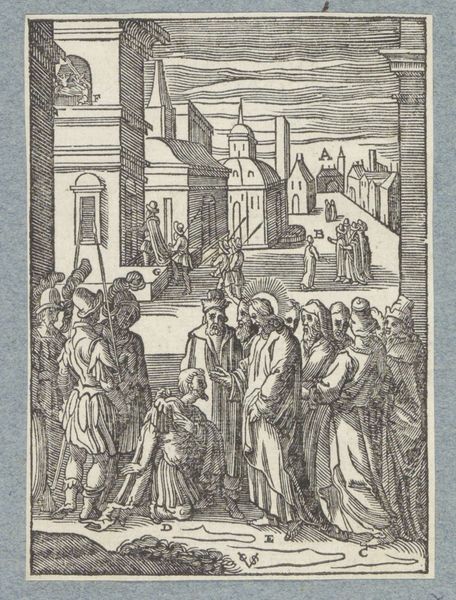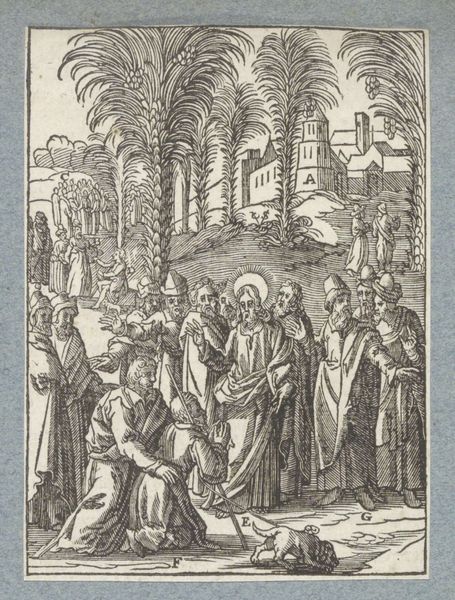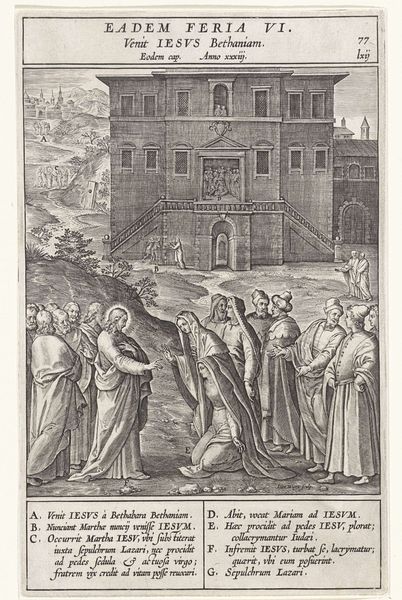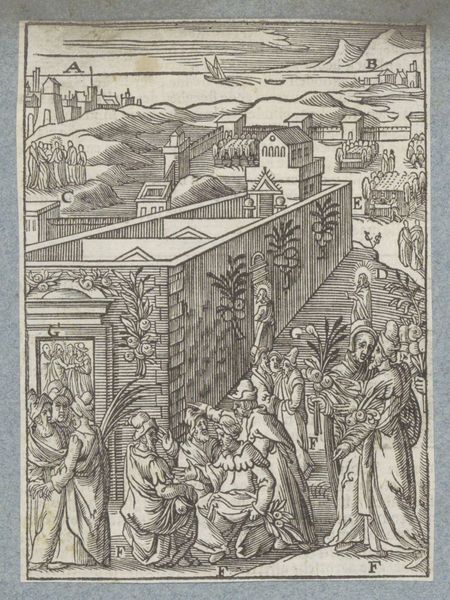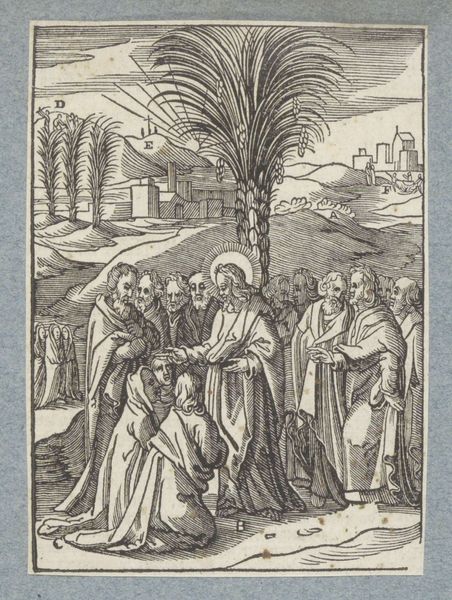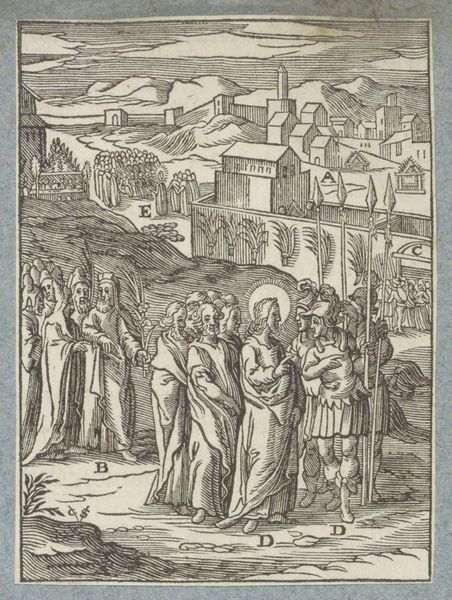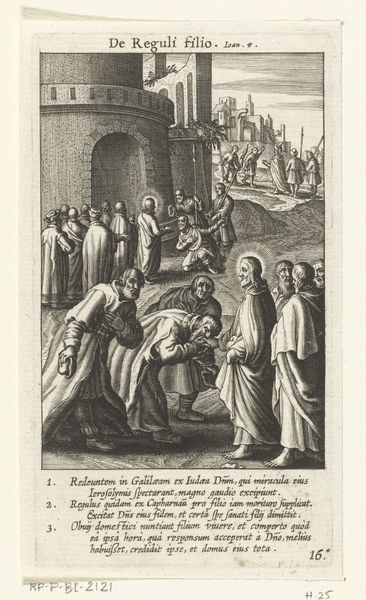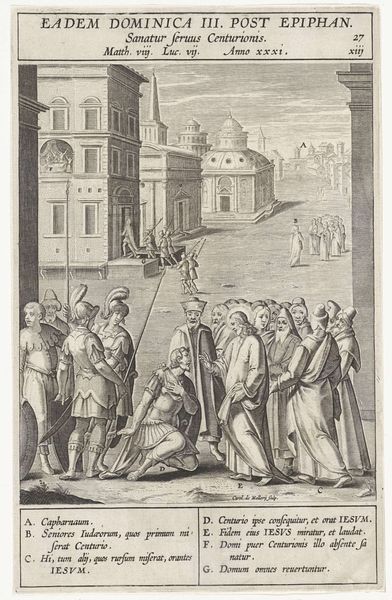
print, engraving
#
medieval
#
narrative-art
# print
#
figuration
#
line
#
history-painting
#
engraving
Dimensions: height 234 mm, width 148 mm
Copyright: Rijks Museum: Open Domain
Curator: Here we have "The Raising of the Son of the Widow of Nain," an engraving made in 1593 by Wierix. The density of lines creates a visually busy scene. What strikes you most about it? Editor: Well, the medium itself, the engraving, is really interesting to me. The whole process of carving into metal and then producing prints…it feels so removed from painting, and yet it conveys such detail. How did printmaking affect the wider consumption and understanding of religious narratives like this one? Curator: Precisely! Think about the implications of printmaking. Suddenly, religious imagery, previously confined to wealthy patrons or church walls, becomes accessible to a much wider audience. Consider the labor involved – the engraver, the printer, the distributors – a whole network engaged in the reproduction and circulation of this single image. How does the act of mechanical reproduction alter our relationship with the sacred? Editor: It’s almost mass production of a miracle, isn’t it? Instead of a singular event, it becomes a commodity, available for consumption. It really changes your perception when you think of it less as a divinely inspired piece and more as…well, as a product. Does the skill of the artist impact that reception? Curator: Exactly. And consider the economic underpinnings of this distribution. Who benefits from the widespread dissemination of such images? Are these prints tools of religious devotion, or instruments of social control, shaping belief systems through easily replicated and widely distributed visual propaganda? The artist has to master both the aesthetics, but the mechanics. That opens avenues to experiment even more? Editor: So, it's less about the specific depiction of the miracle and more about understanding the social and material forces that made the image available in the first place? I hadn't really considered art from this period through that lens. Curator: Precisely. Thinking about art as the end result of labor processes changes the way one look at it. How has this engraving opened your eyes? Editor: It reminds me to ask about production when considering how or why something came to be. Thank you for that shift in perspective!
Comments
No comments
Be the first to comment and join the conversation on the ultimate creative platform.
